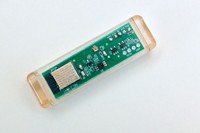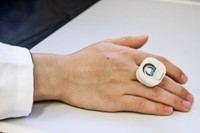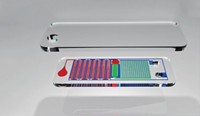Advertisement
Grab your lab coat. Let's get started
Welcome!
Welcome!
Create an account below to get 6 C&EN articles per month, receive newsletters and more - all free.
It seems this is your first time logging in online. Please enter the following information to continue.
As an ACS member you automatically get access to this site. All we need is few more details to create your reading experience.
Not you? Sign in with a different account.
Not you? Sign in with a different account.
ERROR 1
ERROR 1
ERROR 2
ERROR 2
ERROR 2
ERROR 2
ERROR 2
Password and Confirm password must match.
If you have an ACS member number, please enter it here so we can link this account to your membership. (optional)
ERROR 2
ACS values your privacy. By submitting your information, you are gaining access to C&EN and subscribing to our weekly newsletter. We use the information you provide to make your reading experience better, and we will never sell your data to third party members.
Analytical Chemistry
Handheld Analyzer Provides Lab-Like Capabilities For Only $25
Instruments: Affordable electrochemical device uses any cell phone to transmit data
by Stu Borman
August 11, 2014
| A version of this story appeared in
Volume 92, Issue 32

A mobile electrochemical detector called uMED can test for a variety of molecular-level health or environmental indicators and then use any cell phone on any cellular network to transmit results for remote analysis and diagnosis. The device, which costs about $25, could give people in resource-limited areas the ability to perform tests typically carried out by expensive laboratory electrochemical instruments.

Developed by George M. Whitesides of Harvard University and coworkers, uMED is based on a simple blood glucose monitor (Proc. Natl. Acad. Sci. USA 2014, DOI: 10.1073/pnas.1405679111). The device mixes samples by vibration and uses test strips or electrodes together with a potentiostat to analyze them by any of several electrochemical methods: chronoamperometry, cyclic voltammetry, differential pulse voltammetry, square wave voltammetry, or potentiometry.
Using a cell phone’s headphone jack and voice channel, uMED uploads sample data to a data management network. This voice-based data transfer approach ensures that the device is compatible with any mobile phone and with cellular networks from 2G to 4G. The network records and analyzes the data, and results and advice are returned to the user via text message to the same phone.
The researchers note that in most cases previous mobile reporting and point-of-care diagnostic systems required users to enter data by hand, were more limited functionally and lacked network connectivity, or required sophisticated equipment and technologies available primarily in developed countries.
The team demonstrated uMED by using it to detect trace amounts of toxic heavy metals in drinking water, measure glucose in blood, monitor sodium in urine, and perform an electrochemical enzyme-linked immunosorbent assay for malaria antigen.
The study implements “a couple of clever ideas, including the vibration mechanism for on-board sample mixing and the audio jack as a universal communication mechanism,” comments biomedical engineer Samuel K. Sia of Columbia University. “Further work would involve deploying the device in a field setting to gather data and user feedback.”





Join the conversation
Contact the reporter
Submit a Letter to the Editor for publication
Engage with us on Twitter